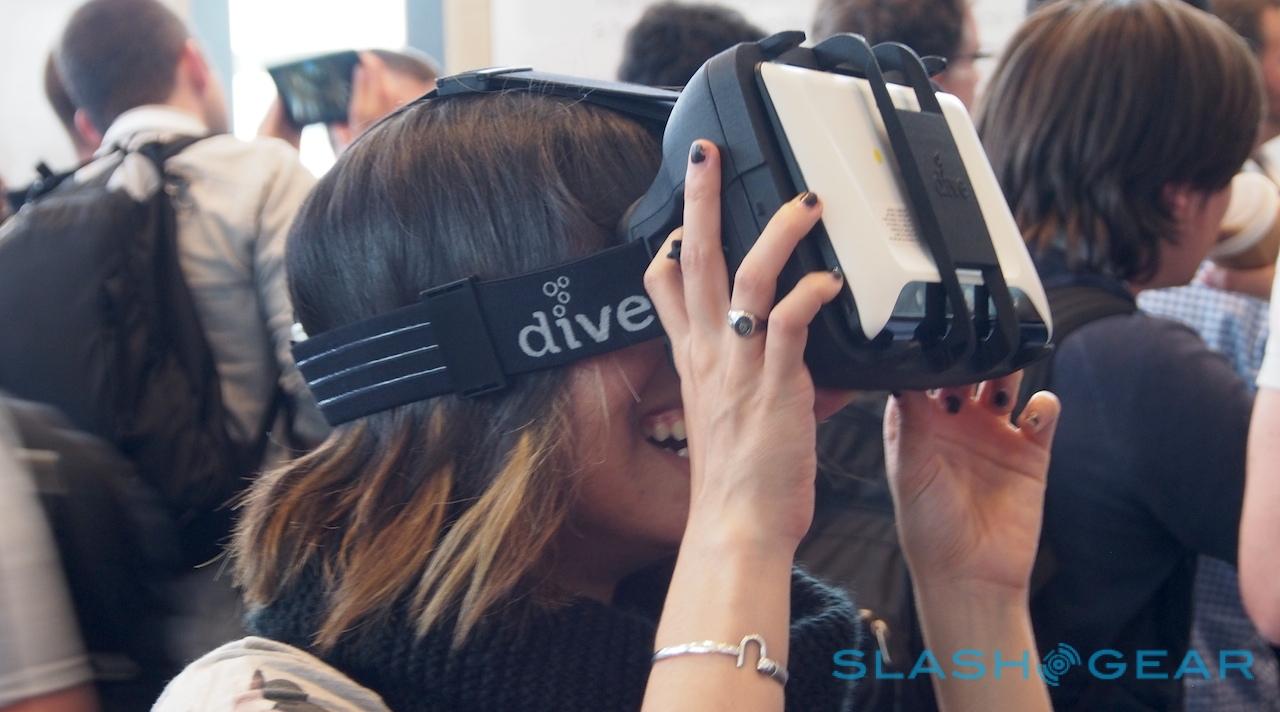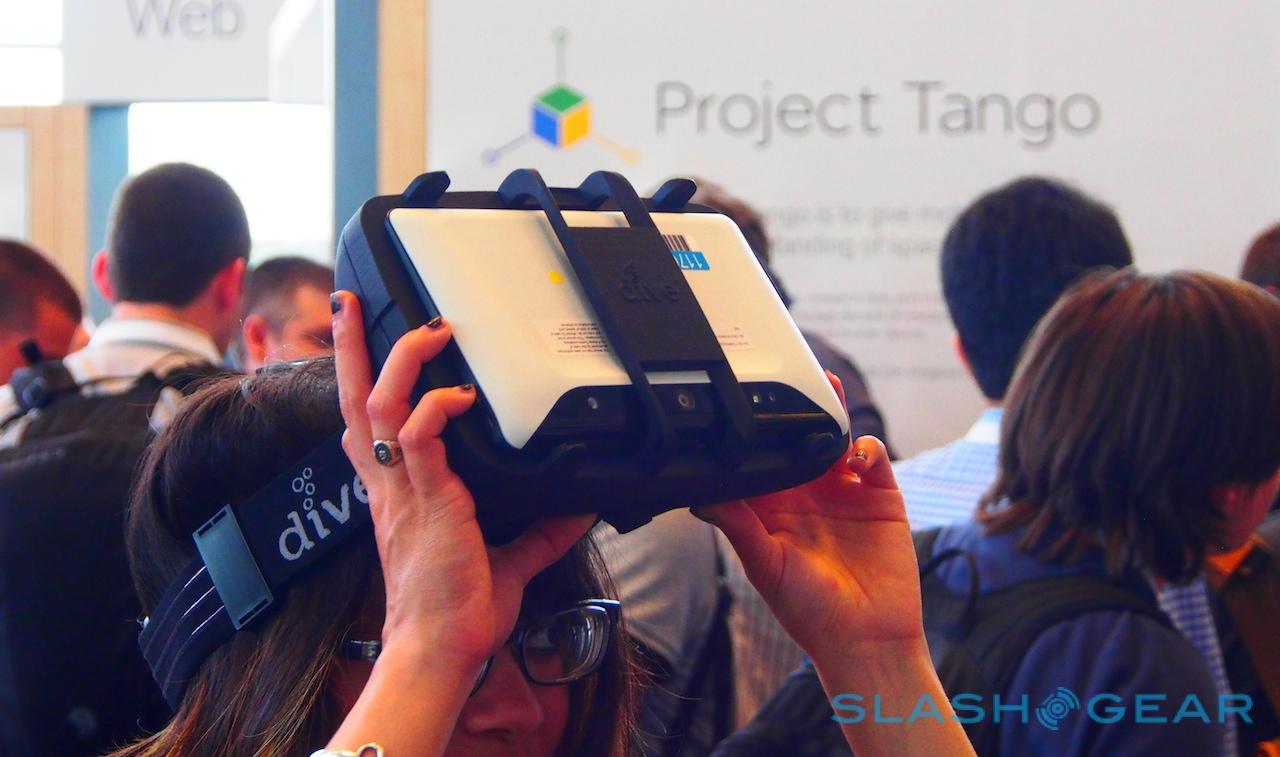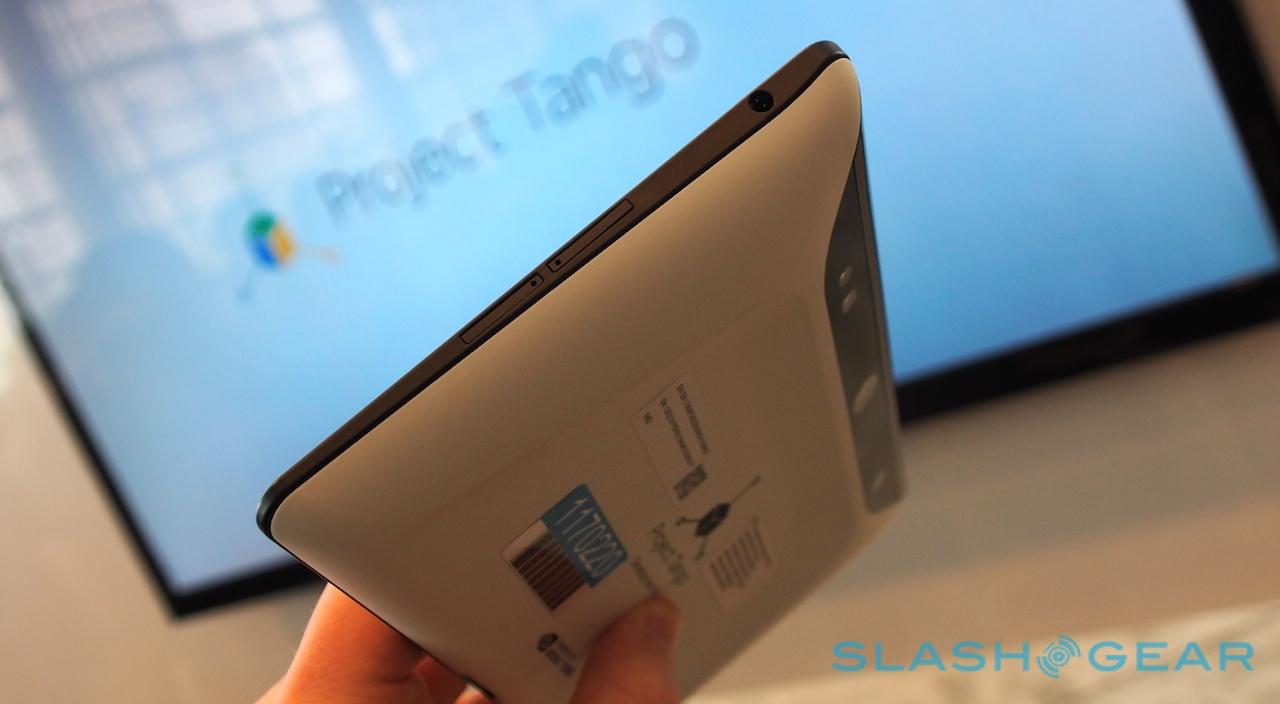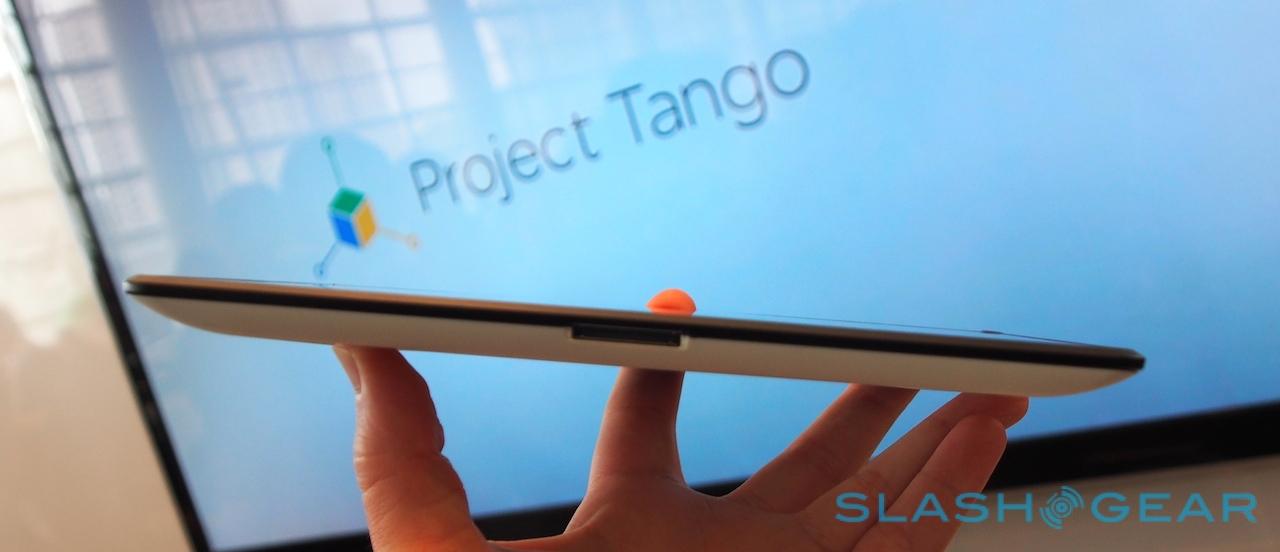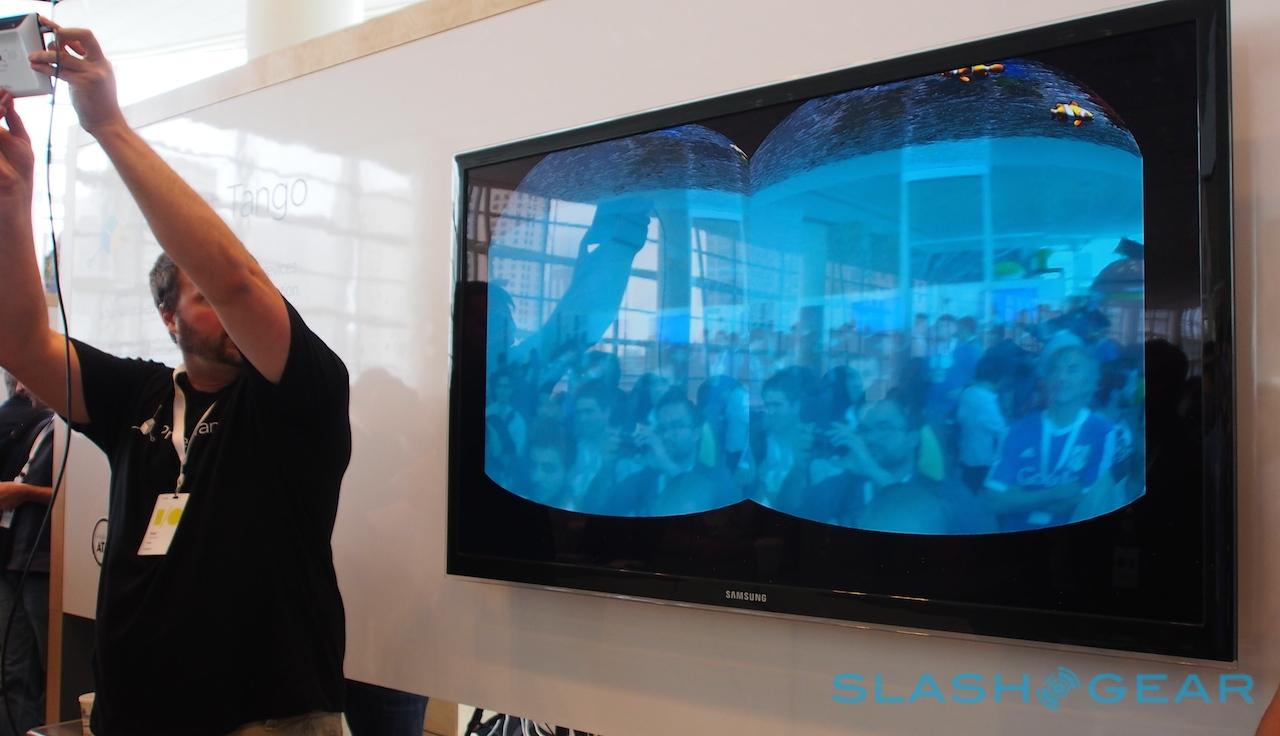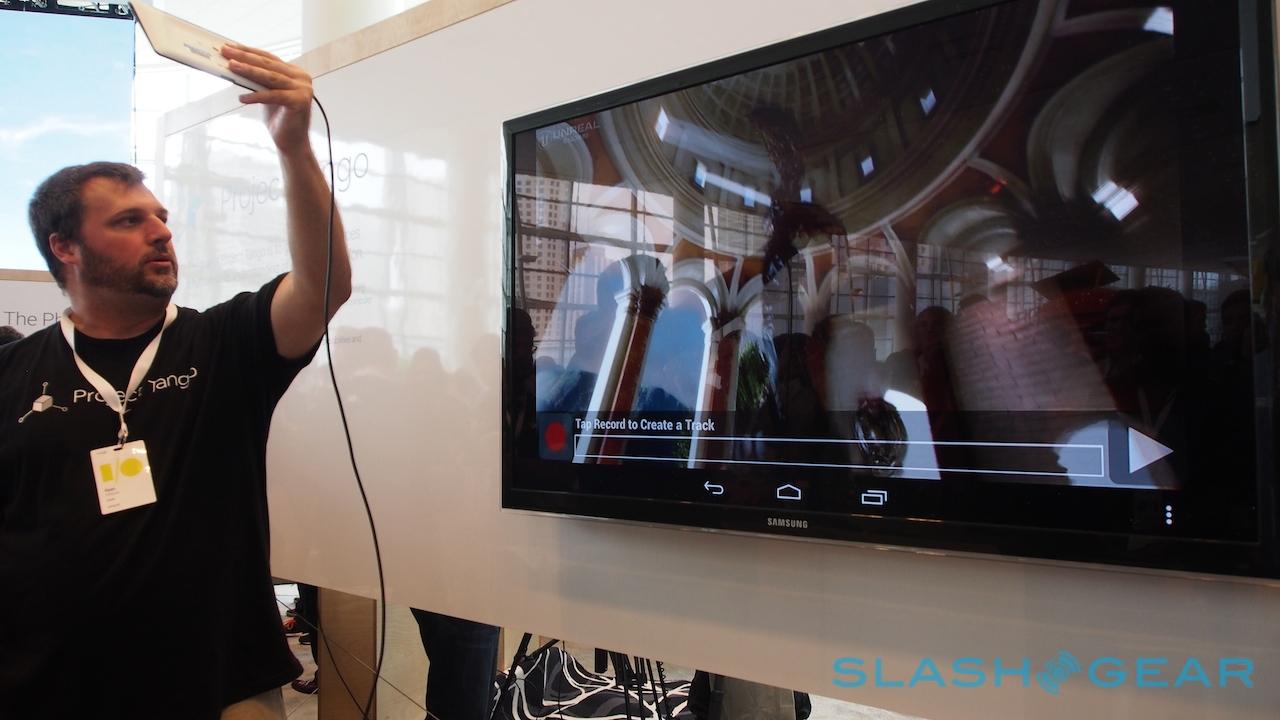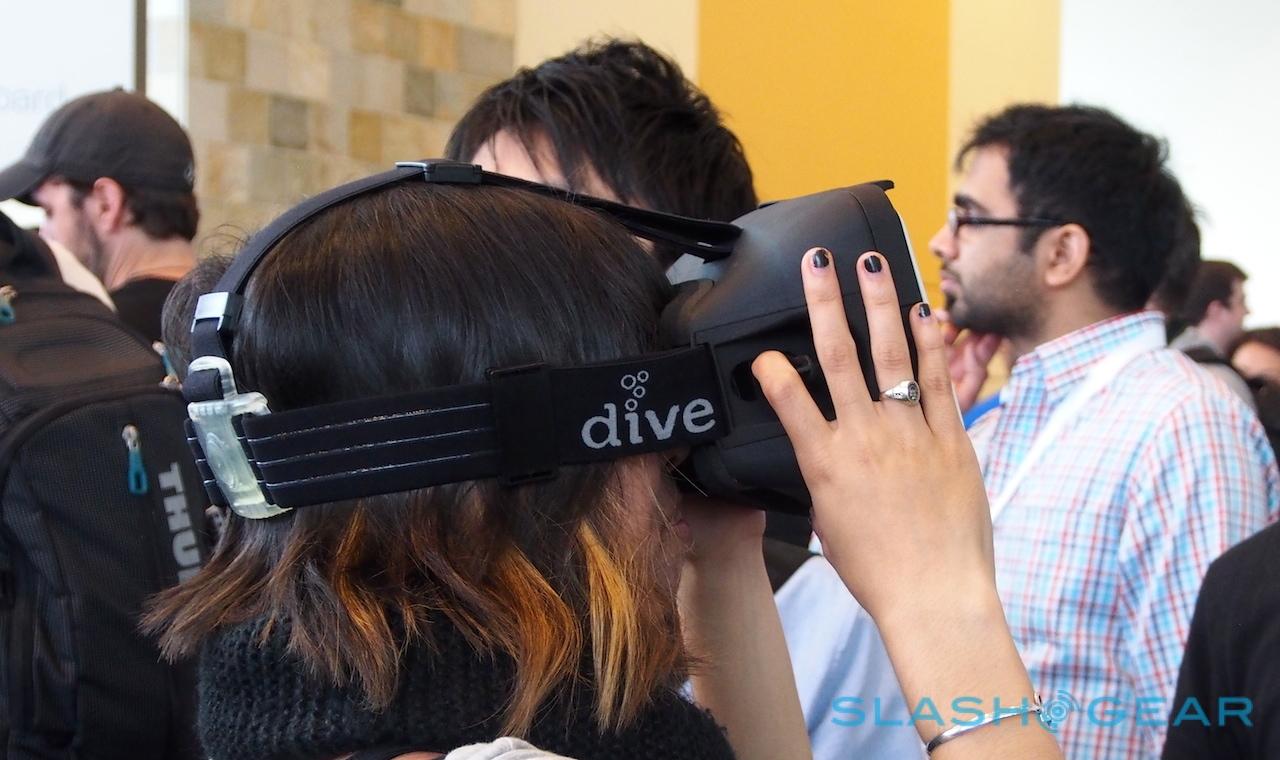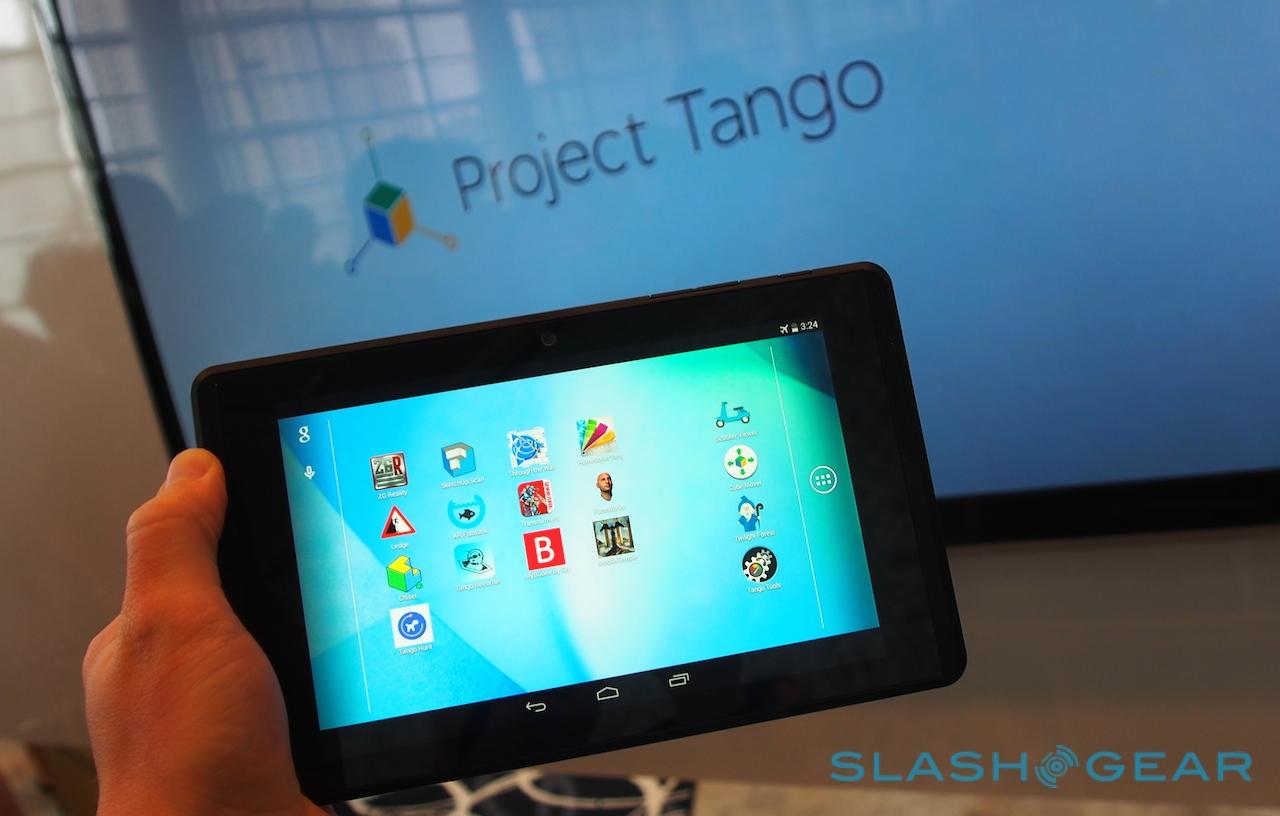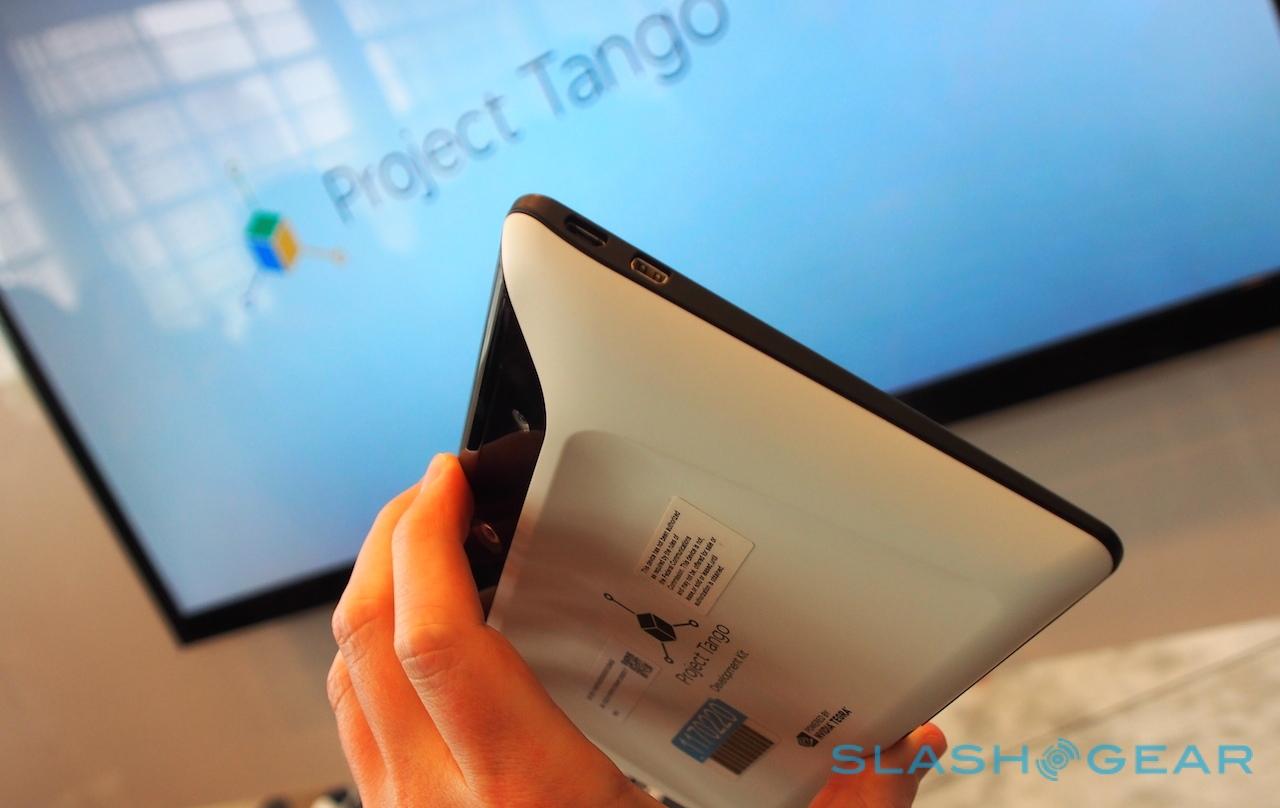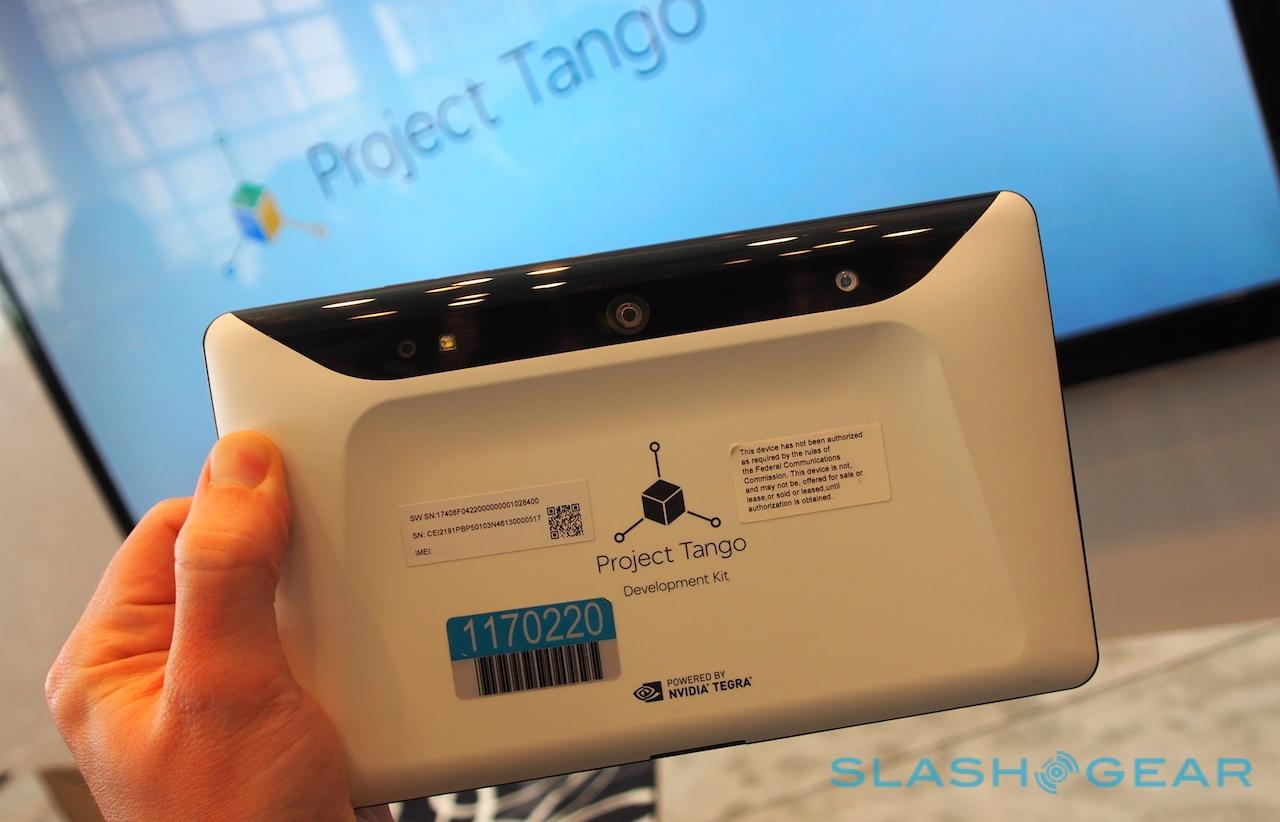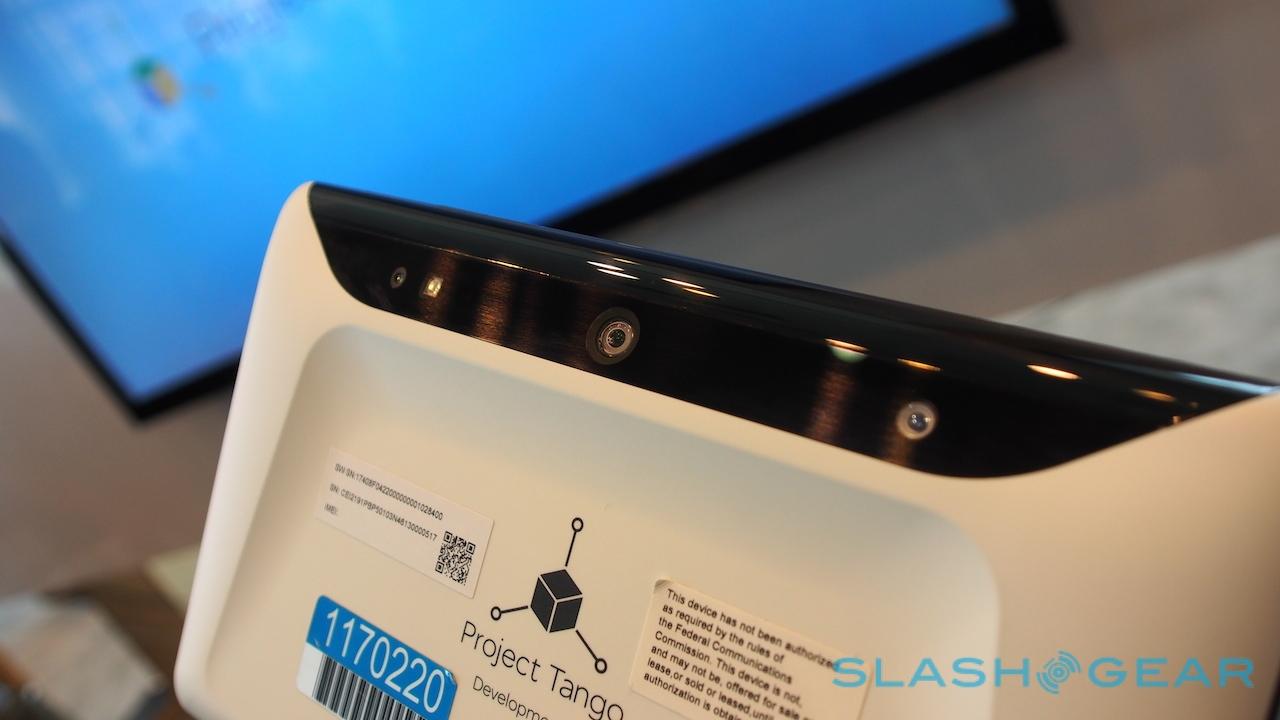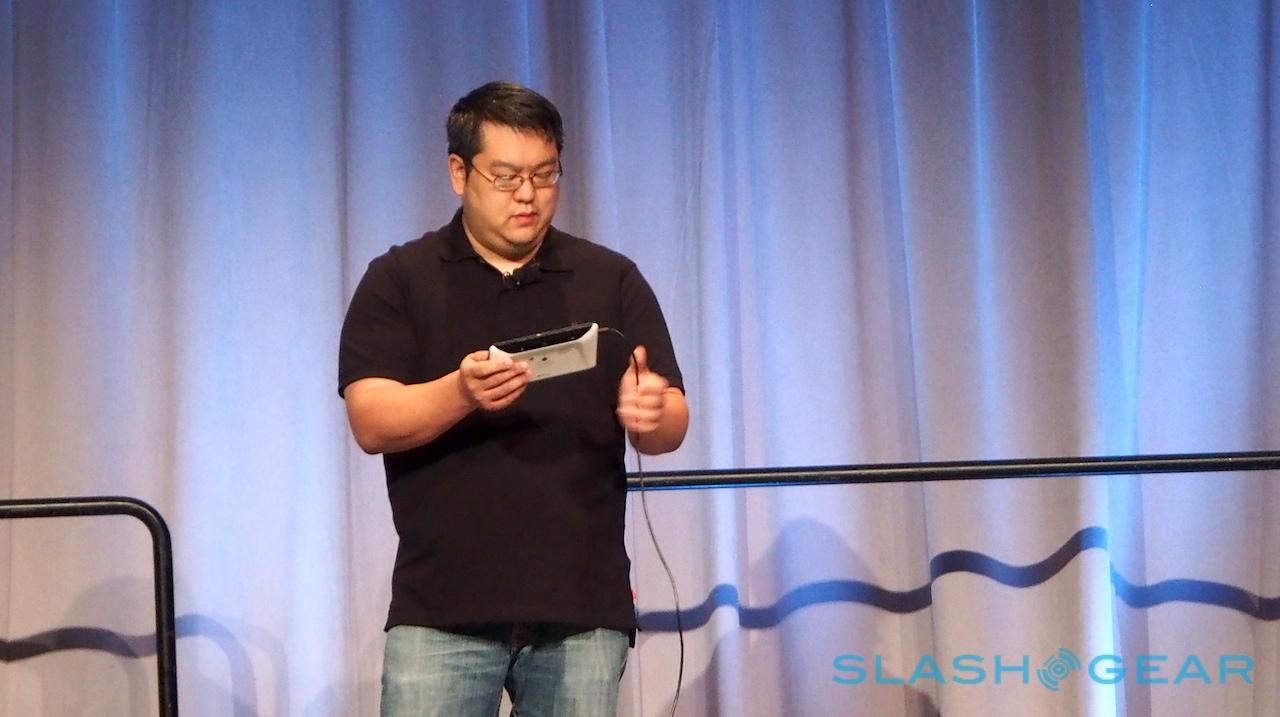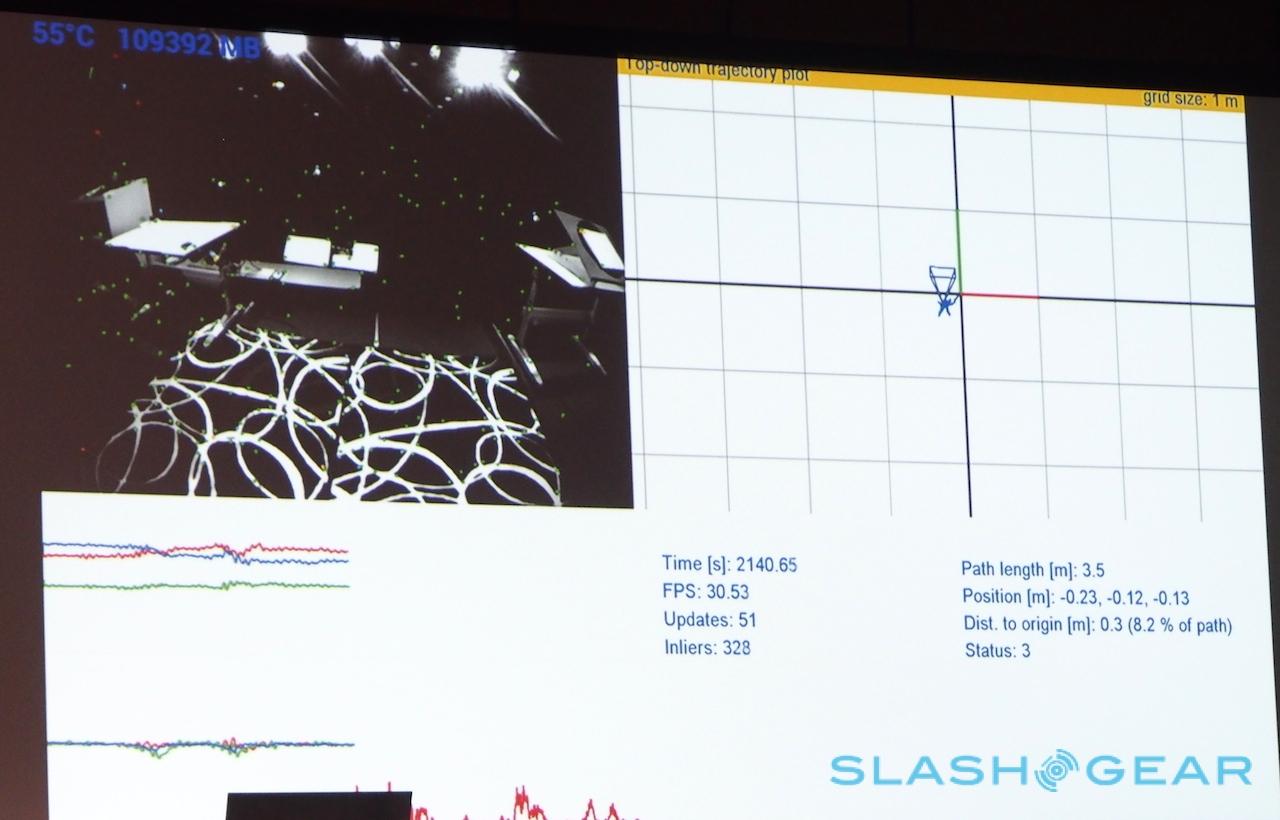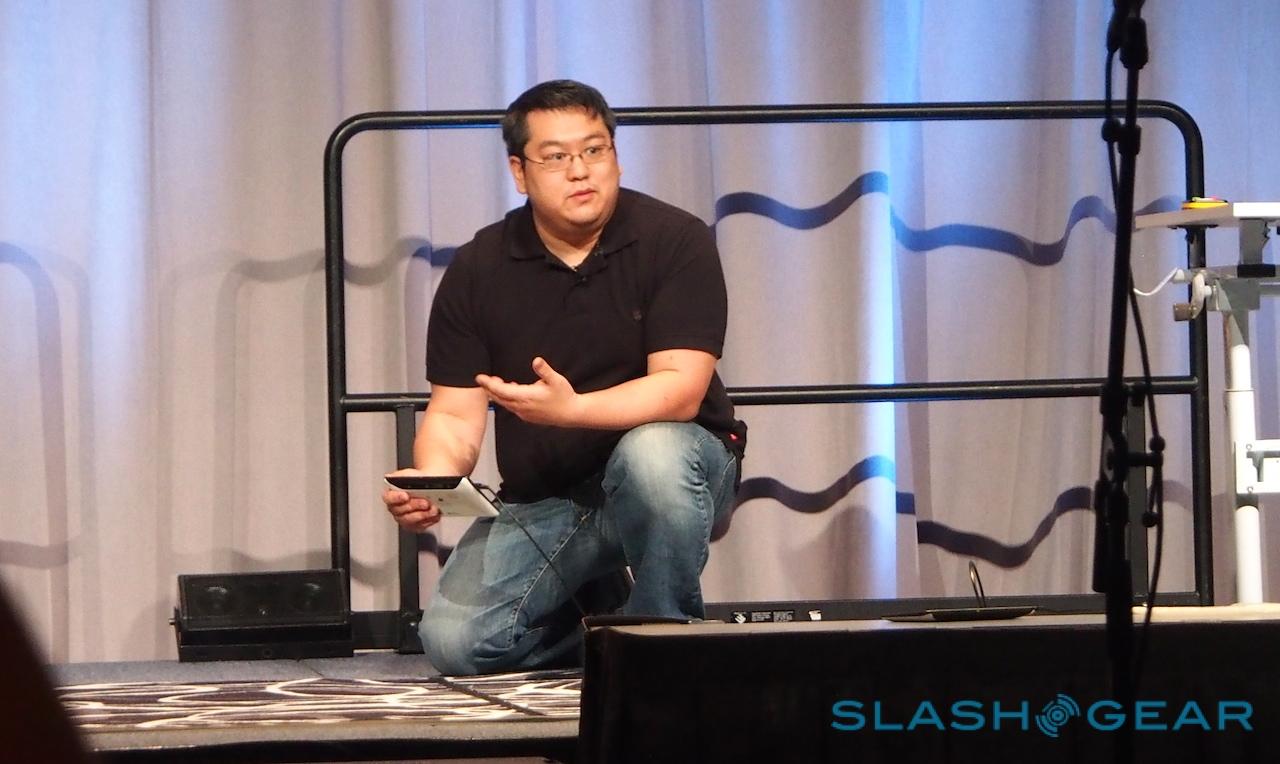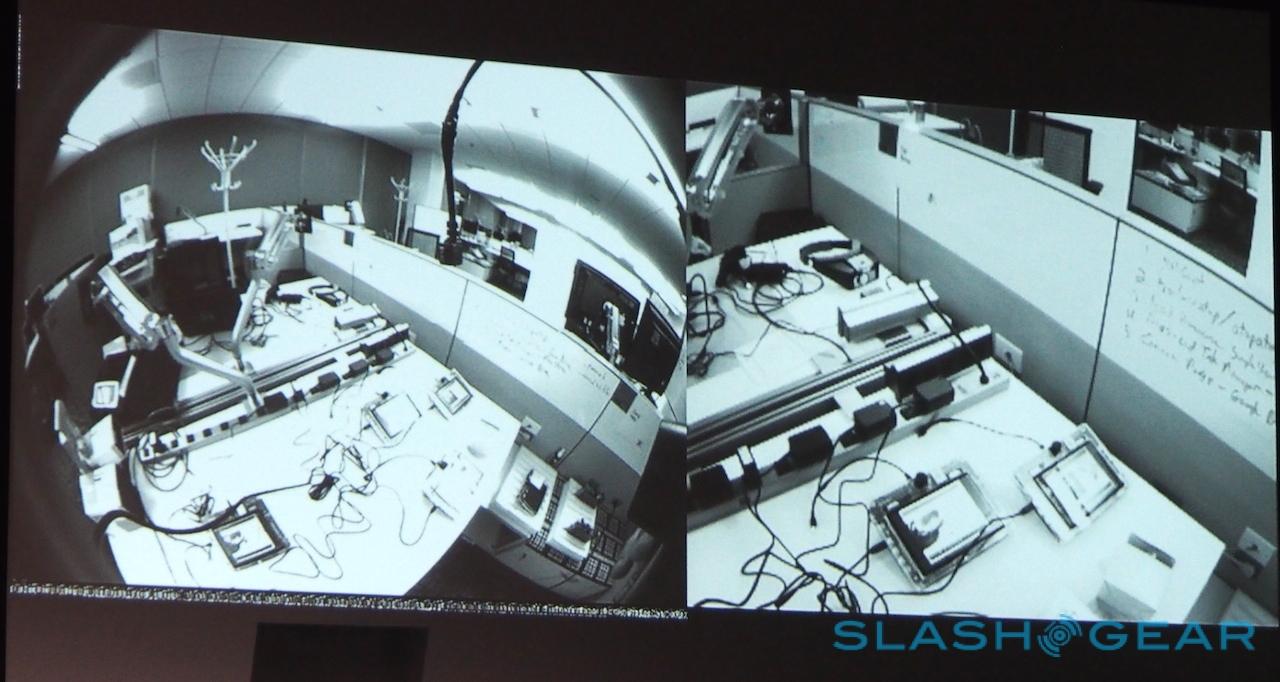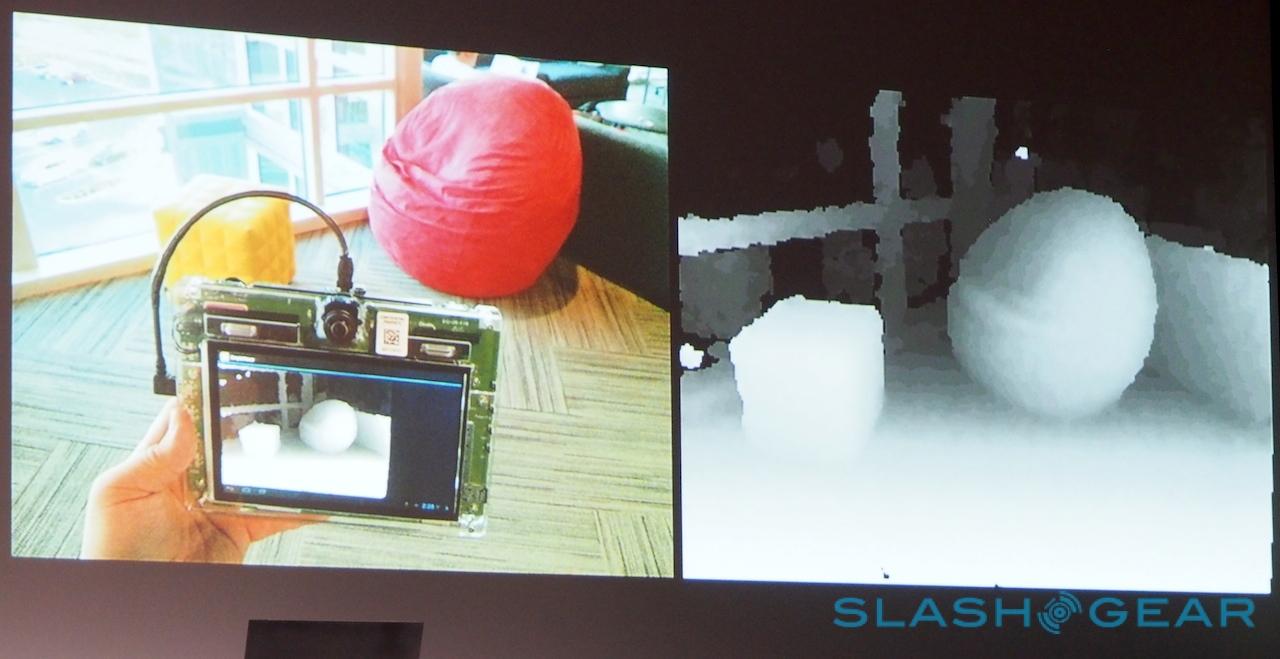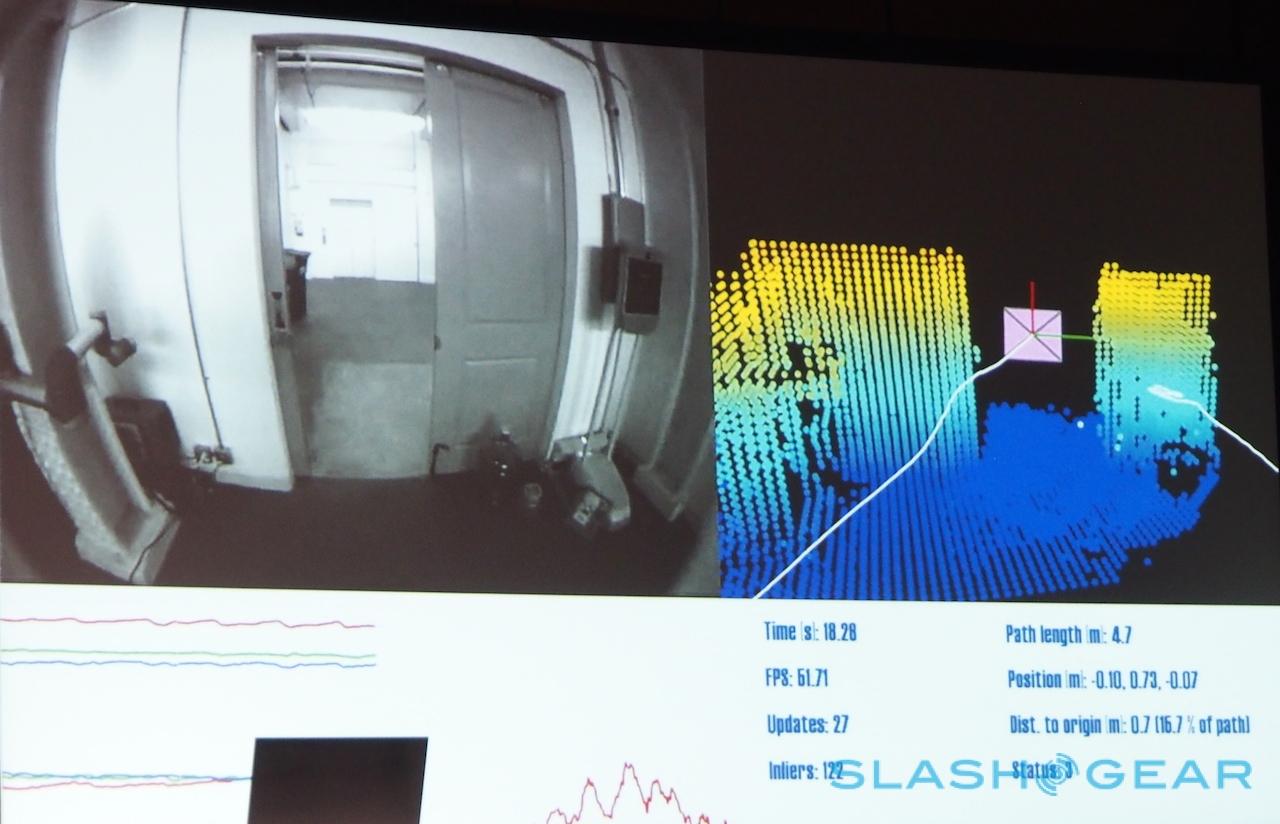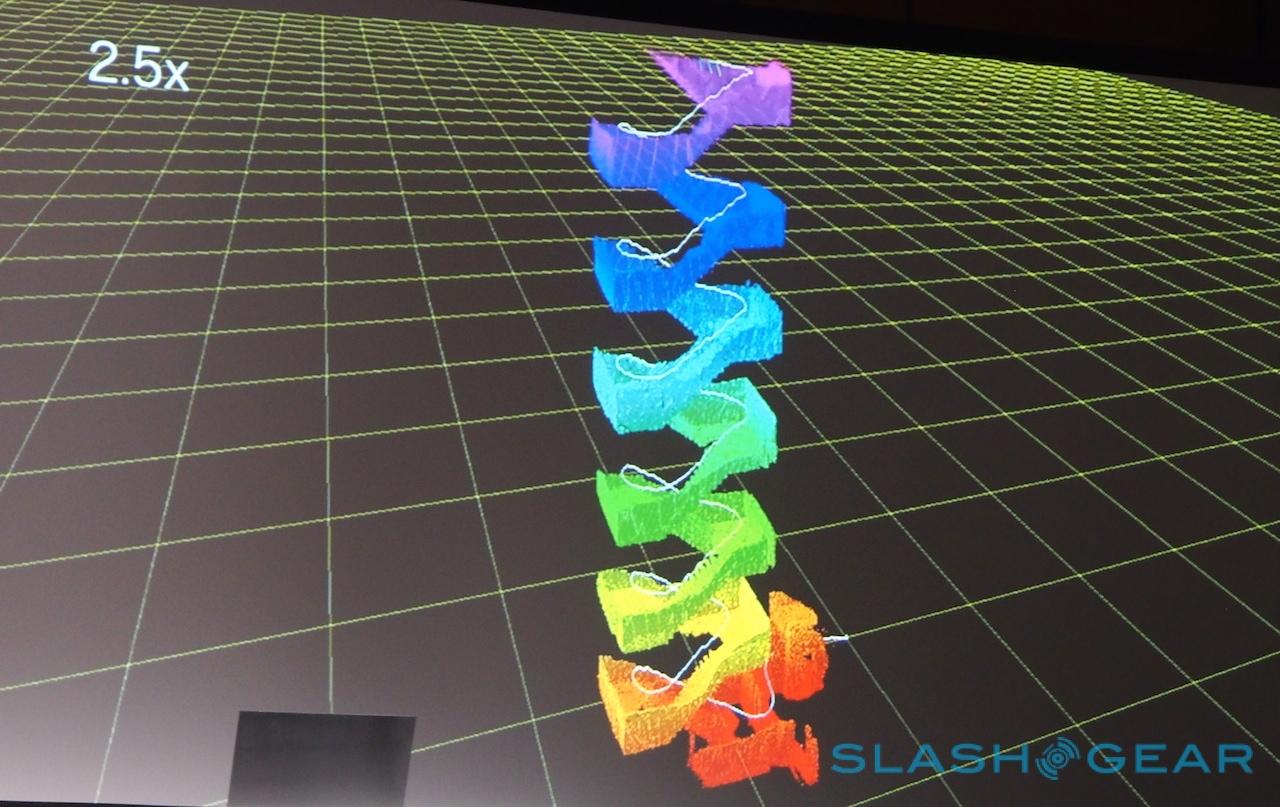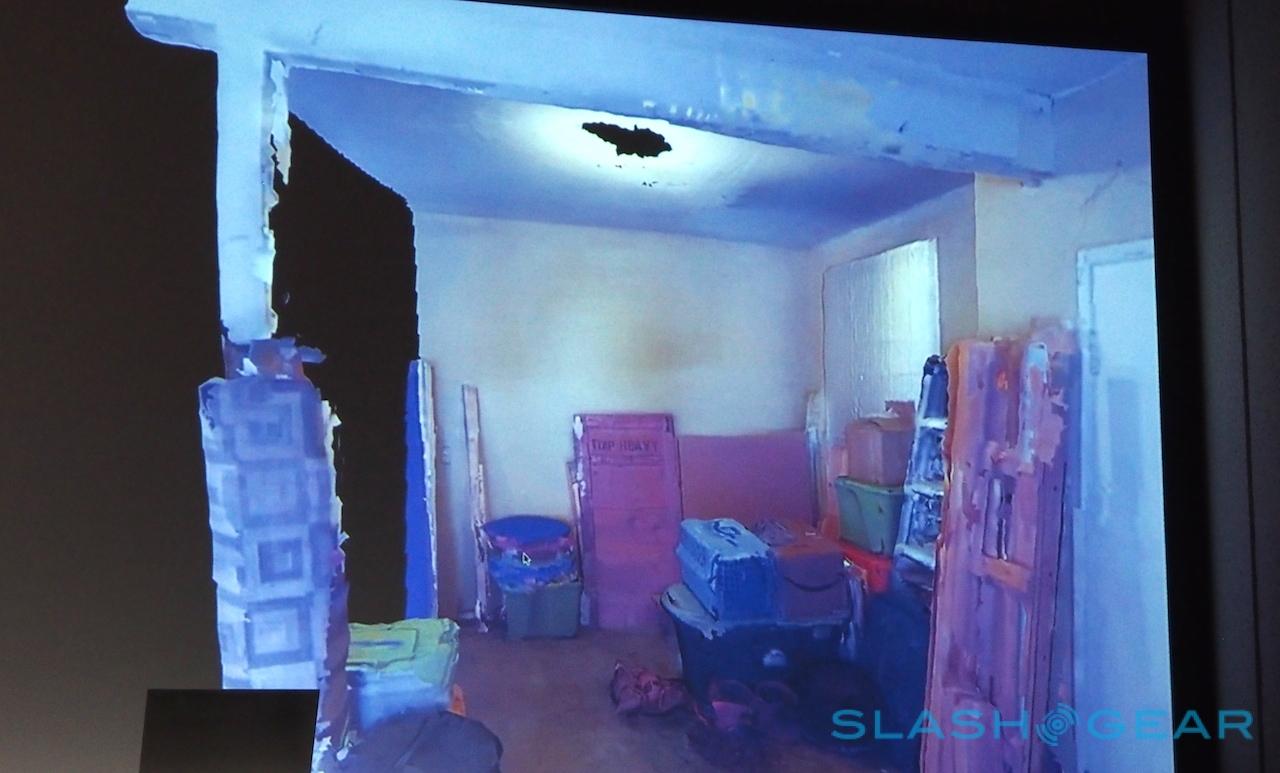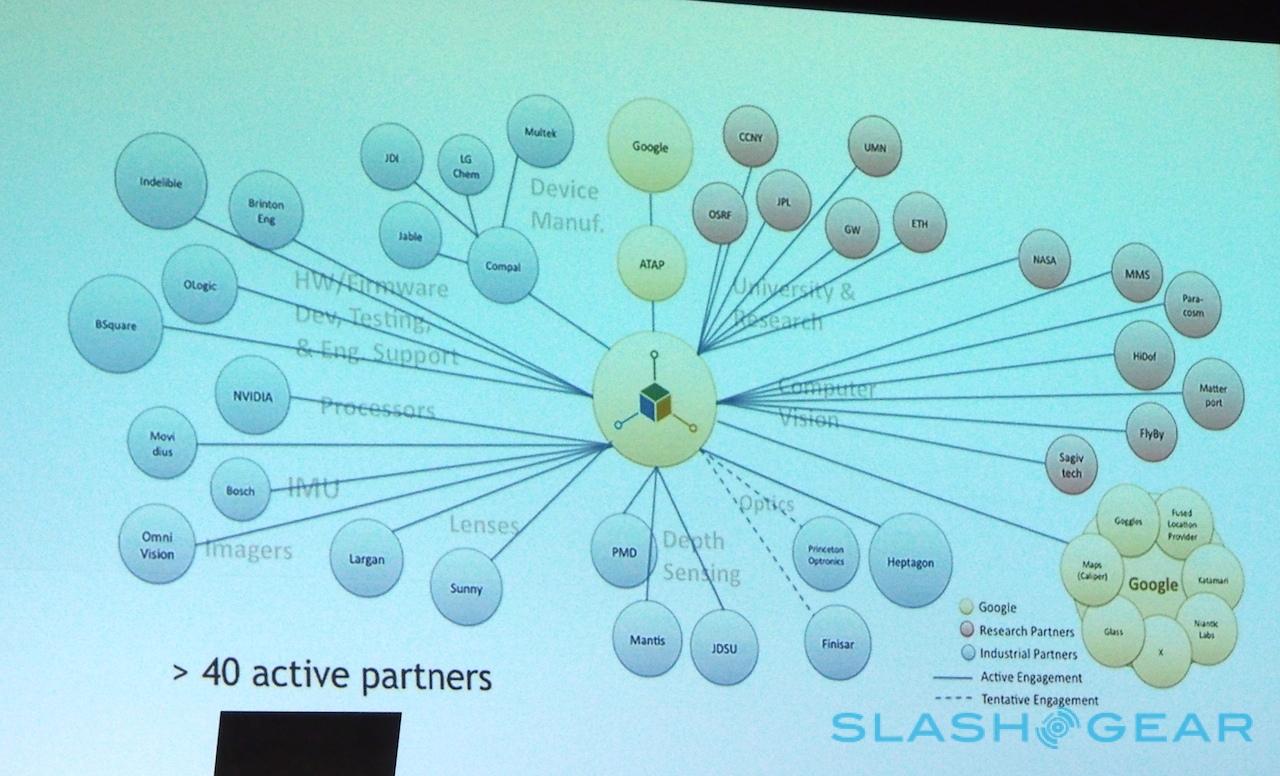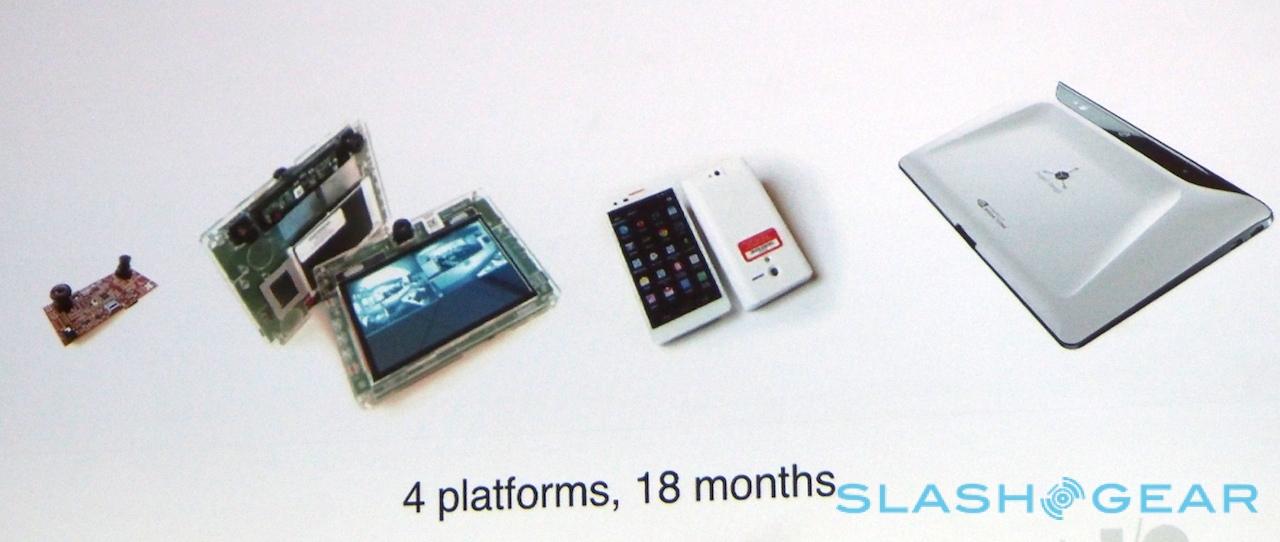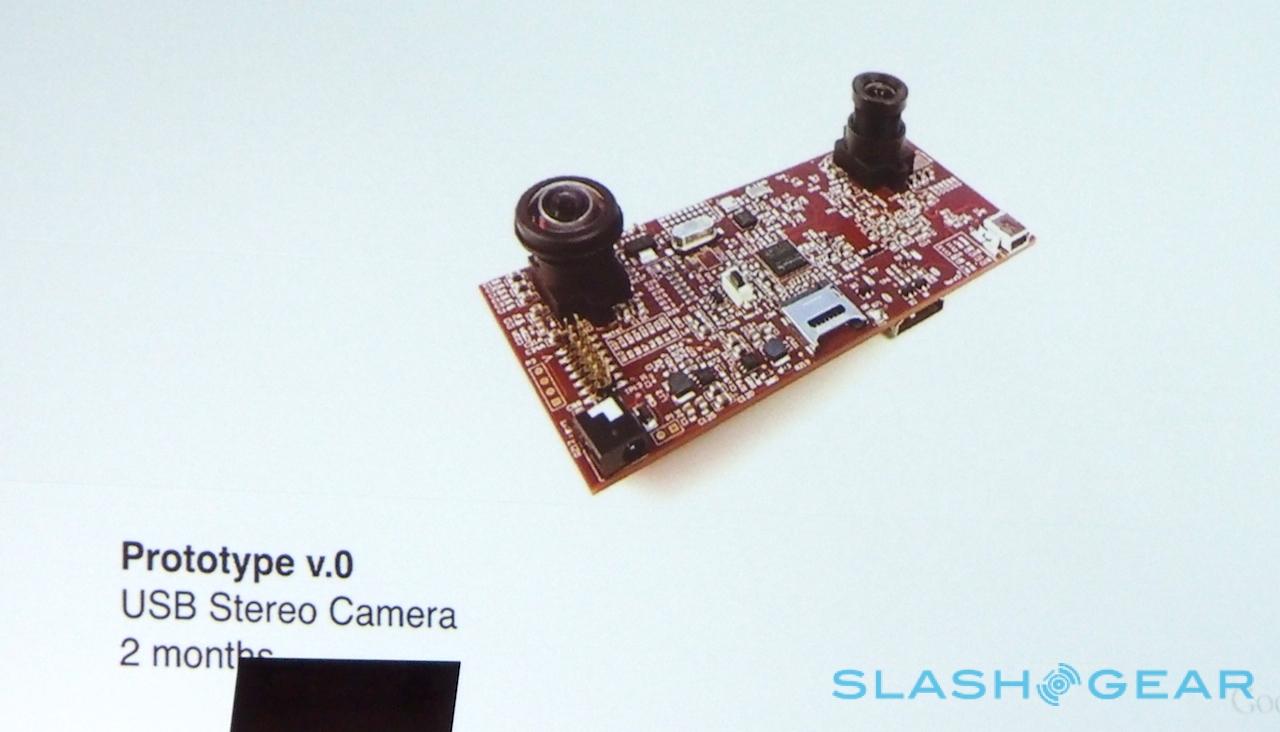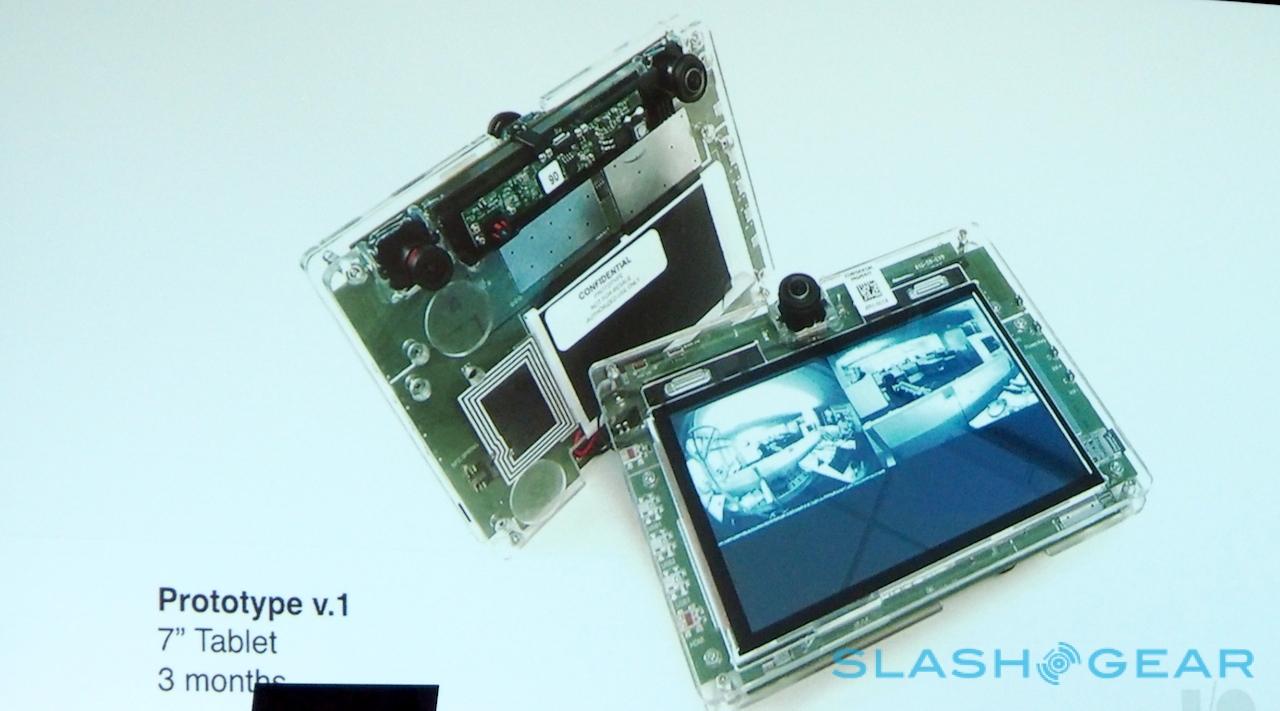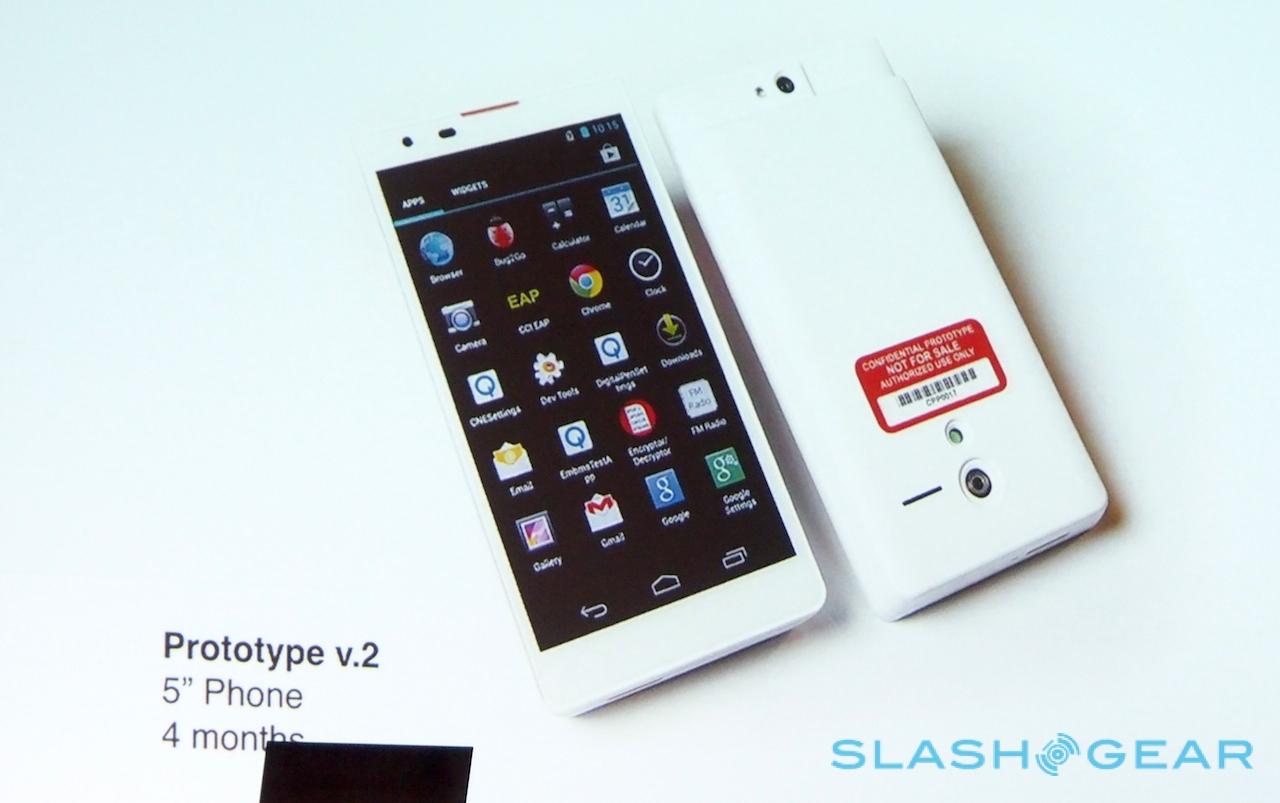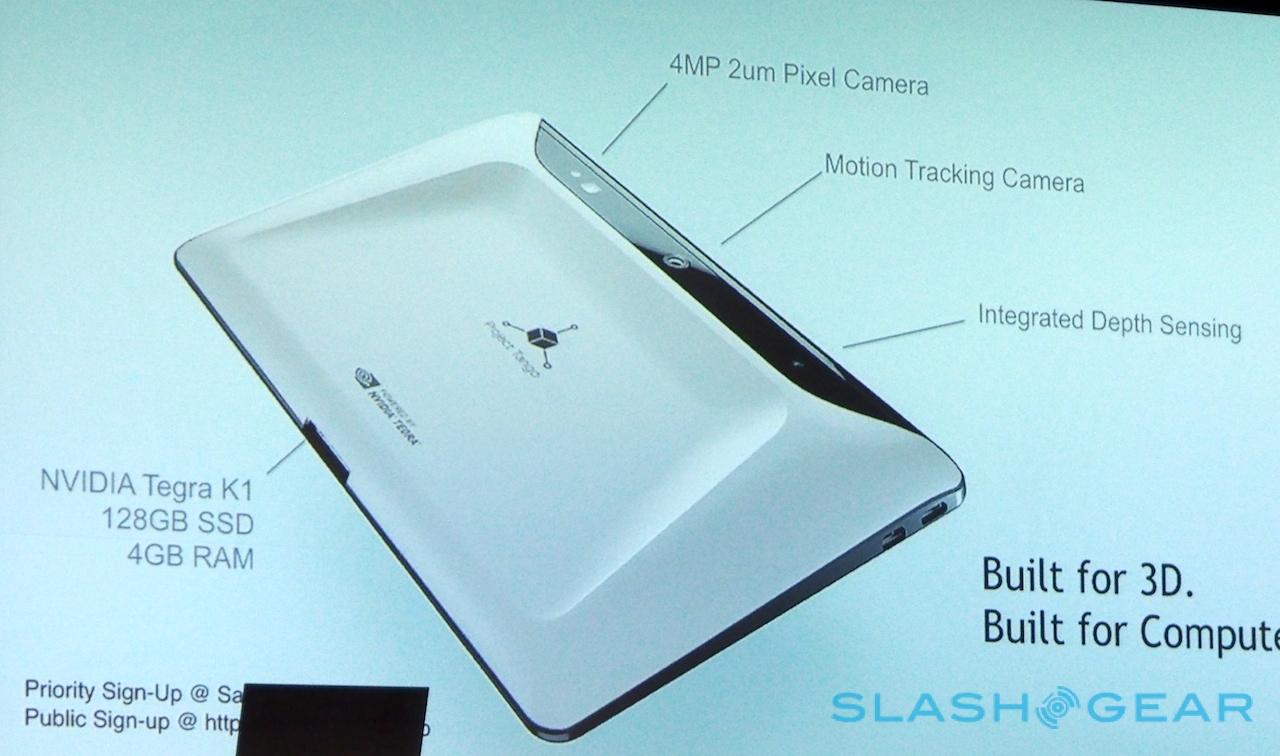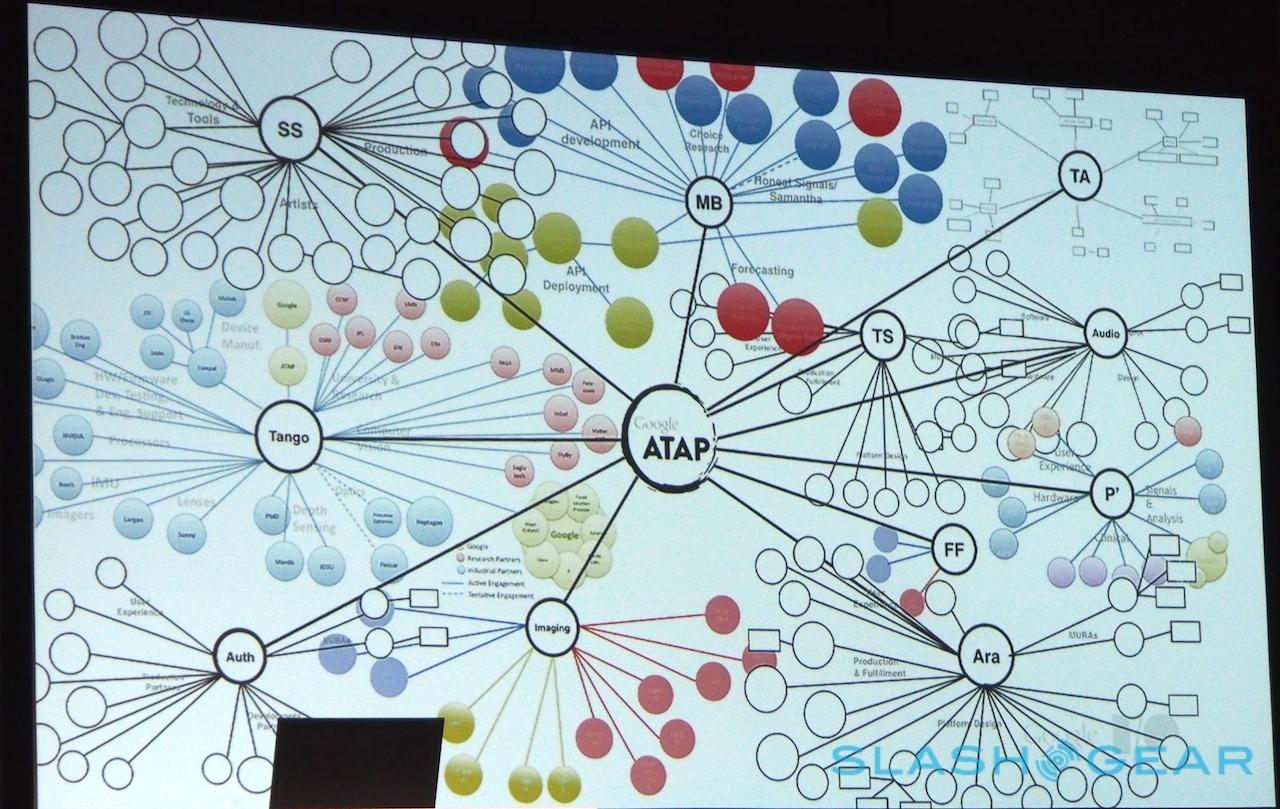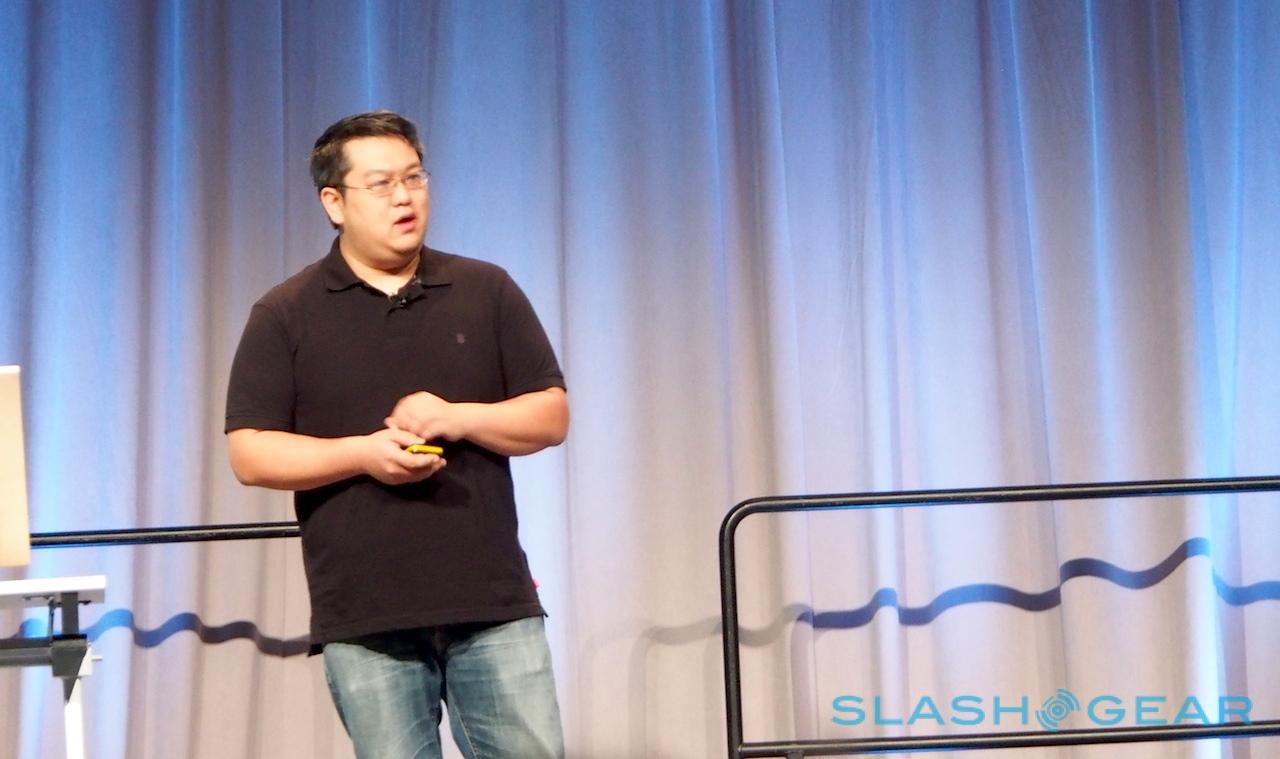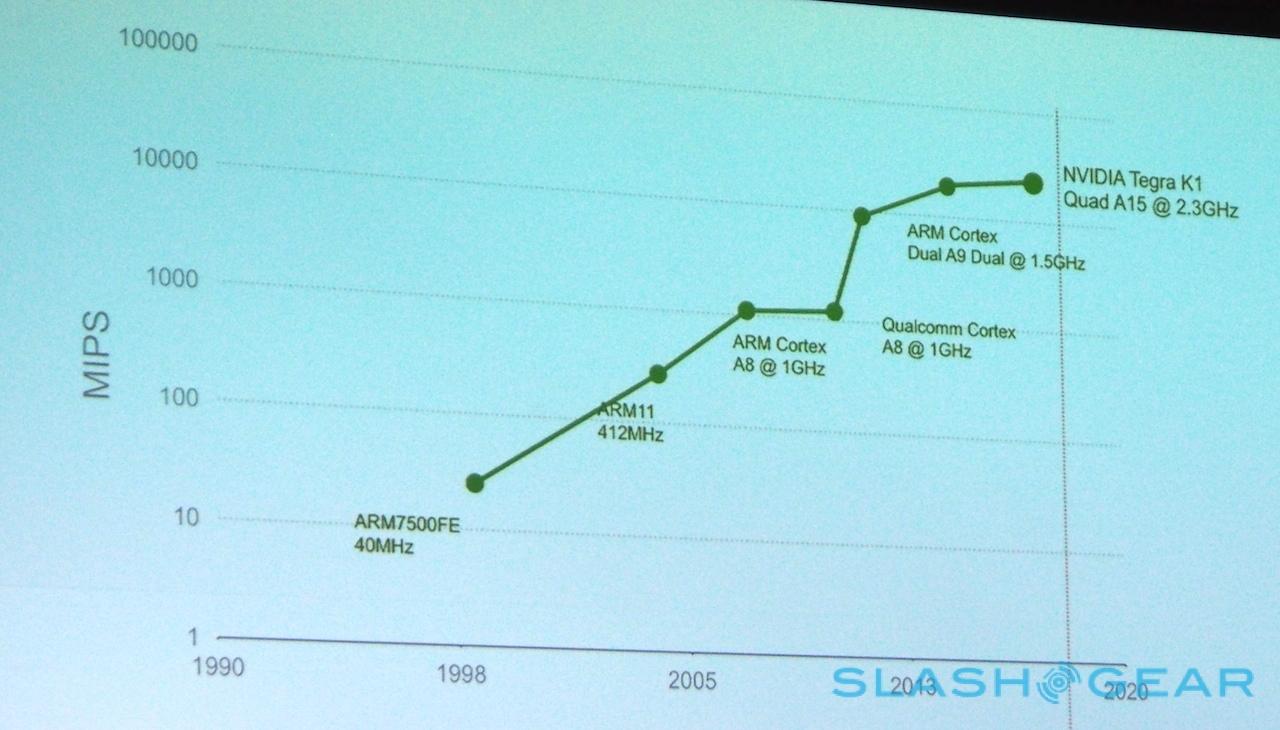Project Tango Tablet Hands-On: Transformers And Sharks At I/O
It might not have the immediate impact of Android L or Android Wear, but Project Tango is certainly nearing graduation point with the news today that LG is working with Google to release a consumer device sometime next year. Explaining exactly why someone might want a 3D mapping phone or tablet isn't quite as straightforward as a smartwatch, though, and so Google has been pulling together partners to show off what Tango and the NVIDIA-powered developer tablet can do, including a more grown-up version of the "Cardboard" virtual reality headset that proved the surprise hit of I/O 2014.
For many, I/O proved the first time they could go hands-on with the recently announced Project Tango developer tablet, a 7-inch Android slate running NVIDIA's Tegra K1 chipset. It's a potent little thing, too: as Tango project lead Johnny Lee explained during Google ATAP's session, it has the same sort of RAM as you'd expect to find in a regular notebook, not to mention far more in the way of cameras and sensors.
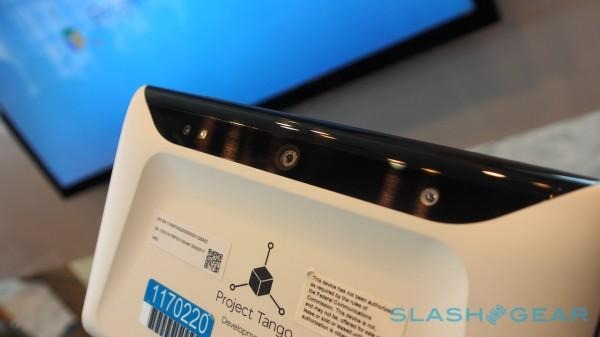
The tablet – which will go up for preorder to developers this week, priced at a not-inconsiderable $1,024 – is the fourth device in the Tango project's history, which kicked off with a USB depth-sensing camera board using off-the-shelf parts to see if the concept itself would actually fly.
Based on the success of that, Lee & Co. pieced together a skeleton 7-inch tablet – effectively sandwiching the components between a couple of slices of transparent acrylic – upon which much of the core development was done. That was followed by the smartphone-scale device with which the project first hit public awareness.
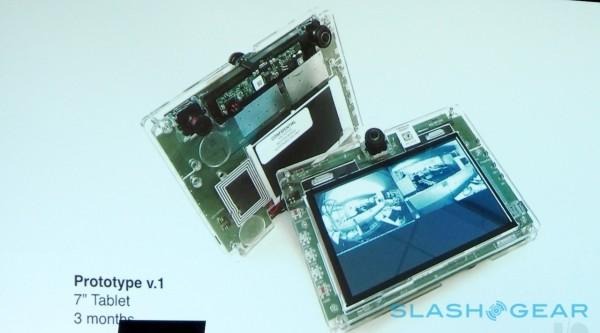
Theoretically it's all the same basic approach: use a combination of cameras to replicate how the human eye perceives, with a broader fish-eye view and a more detailed central portion which mimics the human fovea. They're accompanied by depth sensors, allowing Tango devices to build up a precise 3D modeled view of rooms, staircases, and anything else, without requiring GPS, WiFi, or Bluetooth.
Since regular consumers – or even developers – might not see the long-term value in able to create high-accuracy 3D versions of their homes and offices, so Google has been working with developers to come up with some early apps that take advantage of Tango's capabilities.
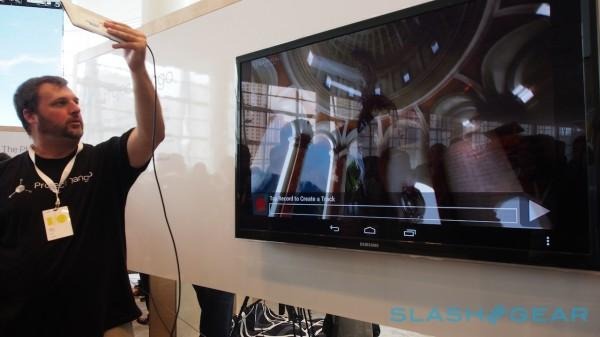
At I/O, for instance, a special Transformers 4: The Age of Extinction app had been developed. The Tango team had 3D-mapped the entire inside of the Moscone West building in San Francisco, where I/O takes place, into which the Marvel team inserted computer-generated Transformers like Optimus Prime.
By holding Tango up, after a brief period where it tried to spot a part of the building's structure it could recognize and lock onto, the Transformers could be overlaid on top of the real-world scene, even breaking through the windows as they battled.
Another demo flooded the Moscone Center with virtual water, complete with fish, turtles, and a shark. Google also had a special headset – like Oculus Rift, but without the integrated electronics – into which the Tango tablet could slide upside down.
By splitting the display into two, with a slightly different picture on each, Tango could create a 3D stereoscopic image to make it actually feel like you're wading through water. Crouching down physically moves you lower in the scene, while if you can stand up high enough, you can poke your head above the waves.
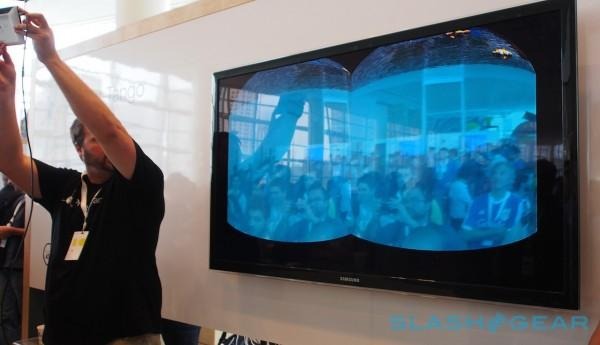
Google's hope is that by giving developers a taste of what's in store, they'll start working on apps that take advantage of the Tango technologies. Meanwhile, Lee and his team will continue to refine the system; "we're currently working actively with companies as well as universities to improve the software stack" he said at I/O, as well as confirming that Tango would work with the Unreal Engine 4, Unity, and Qualcomm Vuforia platforms.

